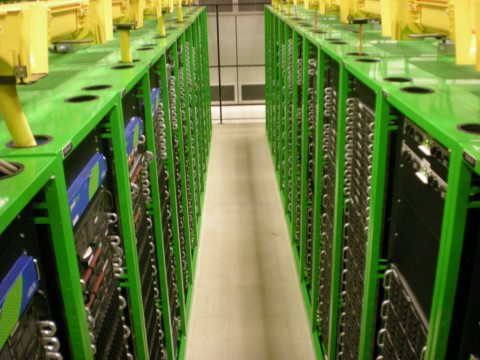Limelight Networks: Why the Olympics didn't 'Melt' the Internet

I admit it, even I was skeptical.
That was when saw the first demonstration of the Silverlight plugin and the NBCOlympics.com web site back in March of this year at the 2008 Microsoft Technology Summit, where a group of Open Source experts gathered from around the world were asked for feedback on various aspects of Microsoft's emerging technologies.
I truly believed that when they finally rolled that website out, that NBC was going to be overwhelmed with traffic and the site would come to a screeching halt, resulting in a catastrophic embarrassment for Microsoft and NBC.
At the time, the content caching partner for the Olympics that was disclosed to us was Akamai, which is what Microsoft currently uses for hosting its own downloads from MSDN and Microsoft Update. Akamai uses a centralized data hosting infrastructure with big Internet pipes that mirrors content that is hosted on a customer's own servers.
Usually with the aid of a special caching appliance installed at the customer's ISP or edge network, the request to download that content is re-directed to Akamai's own servers and fat Internet pipes. When you download big ISO CD and DVD images from MSDN, its going right to Akamai's data centers over the public Internet.
As fat as Akamai's pipes are, I've seen MSDN's downloads slow to a crawl during peak download periods, such as the days following Windows XP SP3 and Windows Vista SP1's release. So like my colleagues here at ZDNet, I was expecting the worst.
As it turns out, Akamai is actually used for some, but not all of the cached content used on NBCOlympics.com -- it hosts the "static" content such as the .JPG files and HTML. However, for all the heavy lifting, such as the streaming video, it's all going through infrastructure hosted by Limelight Networks.
Above: Limelight Networks' Operations Center in Tempe, AZ.
Who are these Limelight guys, anyway? They are a Tempe, Arizona-based company which operates a global network of fiber-optic interconnected datacenters.
Their backbone is capable of 2 Terabits (Tbps) per second of sustained data transfers and they globally replicate approximately 5 Petabytes of data on their storage network, which utilize a mix of proprietary vendor SAN replication technology such as EMC SRDF and Open Source-based technology developed by Limelight itself. Surprise! There's some Linux back-ending all that Windows Media.
Back in late July of this year, NBC finally announced that Limelight would be the primary supplier of content caching services for the Olympics. Where Limelight differs from Akamai and why the Internet didn't "melt" is quite simple -- they are completely "off the cloud".
In other words, unlike Akamai and similar content caching providers, their system isn't deployed over the public Internet.
Also See: Limelight Networks Operations Center Photo Gallery
Say what? Let me explain. When you download videos from NBCOlympics.com, your computer isn't actually going to the Internet to get content. In fact, the content is usually no more than 2 router hops away from your ISP.
Limelight has partnered with over 800 broadband Internet providers worldwide (such as Verizon, Comcast, Road Runner and Optimum Online/Cablevision) so that the content is either co-located in the same facility as your ISP's main communications infrastructure, or it leases a dedicated Optical Carrier line so that it actually appears as part of your ISP's internal network.
In most cases, you're never even leaving your Tier 1 provider to get the video. Slick, isn't it?
So how does all that content get there? Live HD video feeds from the Olympics venues are delivered via optical link to NBC's International Broadcast Centre in Beijing.
Next, the Hi-Def signal is then transcoded/downgraded to 480i video resolution using a special CISCO Scientific Atlanta video encoding appliance solution and sent over trans-continental Optical Carrier to NBC Studios in Los Angeles, and then to NBC's broadcast center in 30 Rockefeller Plaza ("30 Rock") in New York City where the encoding to Windows Media Format (WMF) takes place.
Next, via short haul Optical Carrier connection, the Windows Media files are then distributed to Limelight Networks' primary East Coast replicated data center in New York, and then on to the operations center in Tempe, which replicates all 3000+ hours of Olympics video to its global network of ISP co-located data centers and is queued for media streaming at the very edge your local ISP's network (see network trace screen shot above).
To the end user, this is all transparent, and it just plain works.
Localized content caching is going to be the wave of the future, especially when we start seeing lots of "On Demand" content being offered from next-generation media delivery services. If we truly expect stuff like 3G/4G/5G video to be delivered without any hiccups to next generation cell phones and other wireless devices, services like Limelight are going to become increasingly important.
The near-flawless operation of the live video streaming from NBCOlympics.com over the last week is proof that localized content caching technology works.
Will you be implementing localized content caching for your own rich media based sites? Talk Back and let me know.
